The latest Monday Night Football debate saw Jamie Carragher and Gary Neville discuss the modern back four. Here, Jack Lusby asks if Liverpool are a prime example.

The inaugural edition of Monday Night Football for the 2014/15 Premier League season saw the welcome return of Jamie Carragher and Gary Neville to the Sky Sports studio.
Since their appointment to the flagship coverage programme following their respective playing retirements, the pair have garnered a reputation as fearless, insightful outlets for post-match analysis.
With Carragher a Liverpool icon and Neville former Manchester United captain, it comes as no surprise that the pair are often captured at loggerheads when it comes to footballing debate.
As part of this opening feature, the pundits discussed the merits and problems of a modern defensive unit, following United’s 2-1 loss at home to Swansea City when utilising a 3-5-2 formation.
Carragher vs. Neville
The main talking point was the role of the modern full-back—a wing-back in a back-five situation.
Neville outlined his belief as to the roles of both centre-backs and wide defenders in a modern system—ostensibly such as one used at United:
“I believe strongly that outside centre-backs in a back three, who have to defend the wide areas and accept the ball in wide areas in full-back positions, and wing-backs who have to be equally as good at one end of the pitch as they area at the other, I believe are specialist positions.”
– Gary Neville, Monday Night Football
The assertion that these are “specialist positions” suggests that Neville believes that this modern system is not available to all clubs.
Carragher, however rebuked this notion, posing to Neville:
“You play in back four now, the full-back positions they take up—they’re high and wide. We’ve seen Liverpool doing it…the modern full-back gets forward. The modern full-back is a box-to-box player.”
– Jamie Carragher, Monday Night Football
The 36-year-old continued his dissection by focussing on the role of the centre-back in a modern defensive system:
“Look at Liverpool last season. When Steven Gerrard drops in between his two centre-backs, those centre-backs—whether it was Sakho, Skrtel or Daniel Agger—were coming out with the ball; that’s what they’re expected to do.”
– Jamie Carragher, Monday Night Football
Whether these positions in a modern defensive positions are “specialist,” or the modern full-back is a “box-to-box player” or not, it is clear that this is a system that Carragher believes Liverpool have been and will continue to utilise.
The question remains now, following the acquisition of Dejan Lovren this summer, whether the Reds are set up to thrive with a modern back four.
The Full-Backs

Carragher talks about how modern full-backs are judged by the amount of crosses they put in, but in their “box-to-box” nature, it is also the amount of crosses stymied that should be considered.
At this juncture, following the signings of Alberto Moreno and Javier Manquillo, along with the poor form of Glen Johnson and the marginalisation of Jose Enrique under Rodgers, the Spanish duo will form Liverpool’s first-team full-back options for this season and, hopefully, beyond.
This is justified due to the pair’s exemplary record in the modern full-back role.
Statistical analysis blog Bass Tuned to Red compared Moreno and Manquillo with the Reds’ other full-back options, along with previously reported targets Ben Davies and Ryan Bertrand.
ICYMI: Brendan Rodgers on the types of full back he likes, and the stat that backs this up pic.twitter.com/wEDIfcAbHf #Moreno #Manquillo #LFC
— Andrew Beasley (@BassTunedToRed) August 13, 2014
Most encouragingly, Manquillo and Moreno boast exceptional records in terms of blocking crosses.
In an injury-hit 736 minutes of football for Atletico Madrid last season, Manquillo blocked 12 attempted crosses, whilst Moreno blocked 26 in 2414—this produces rates of 61.3 and 92.8 minutes per blocked crosses respectively.
Johnson, Enrique and Jon Flanagan, the Reds’ other full-back options, pale in comparison with rates of 193.5, 201.3 and 315.
This is paired with the attacking ability that the Spaniards possess, making them ideal candidates for the modern full-back role.
The Centre-Backs

The “specialist role” of the modern centre-back is a valid argument—in another section for Monday Night Football the pair analysed the failures of Richard Dunne in this role.
Luckily, Liverpool under Rodgers are well set up to thrive in this area.
The acquisitions of Lovren and Mamadou Sakho, along with the development of Martin Skrtel under the Ulsterman, provide Rodgers with a plethora of centre-back options both comfortable on the ball and able in the challenge.
Add to this Carragher’s suggestion of Daniel Agger—a defender who is arguably affected by injury issues—and this completes the Reds’ options for the modern centre-back.
Using data courtesy of Four Four Two’s Stats Zone, based on the players’ performances last season, shows the effectiveness of each defender in the wide areas Carragher and Neville outline as so problematic.
This accommodates successful defensive actions in wide areas—between the edge of the penalty area and the touch-line—including tackles, interceptions, clearances and aerial duels.

Furthermore, this can be paired with the centre-backs’ passing accuracy, per WhoScored:
Lovren – 82%
Agger – 89.1%
Skrtel – 90.8%
Sakho – 92.5%
Lovren’s may seem low, but a 95.7 per cent accuracy in his Liverpool debut may show the Croat’s suitability to Rodgers’ system.
With these totals, combined with passing accuracy—standing for composure on the ball—shows why Lovren and Skrtel have been Rodgers’ preferred defensive partnership so far.
It can be argued that Lovren should be paired with the defensively imperious Sakho in the future, and the Frenchman has the qualities to thrive.
This was particularly apparent in last season’s ill-fated centre-back quartet experiment in the 1-0 loss to Southampton at Anfield, Sakho was deployed in the left-back role and made six defensive actions.
Steven Gerrard as the Missing Piece

The focus of Carragher and Neville’s debate was on a back five system, with three centre-backs and two wing-backs, and the missing piece in Liverpool’s set-up regarding this is Steven Gerrard.
Following the Reds captain’s transition into a regista role under Rodgers, Gerrard can be seen dropping in between the oft-advancing centre-back pair.
This often leaves the Englishman as the most deep-lying player on the pitch, and the defensive qualities Gerrard has shown—with 2.9 tackles made on average per game the third highest in the squad—underlines the capability to succeed in this role.
Steven Gerrard vs Man City: 90% pass accuracy, 4 interceptions, 100% tackle success & 1 assist. What a player. pic.twitter.com/hmZSIfGSS2
— Squawka (@Squawka) April 13, 2014
More importantly, the creative abilities Gerrard possesses make him ideal for this role.
This can be either an accurate 70-yard ball or—and this is hugely underrated within the 34-year-old’s game—a canny ability to open up play swiftly and incisively.
This is a short-term measure, naturally, and the midfielder will continue to wane in the next season or two, but for the time being Rodgers can depend on Gerrard.
Between Gerrard, Manquillo, Moreno, Lovren and either Skrtel or Sakho, Rodgers is now blessed with the personnel capable of flourishing in a modern defensive system.
Do you think Liverpool under Rodgers fulfil the roles outlined by Carragher and Neville? Let us know in the comments below.
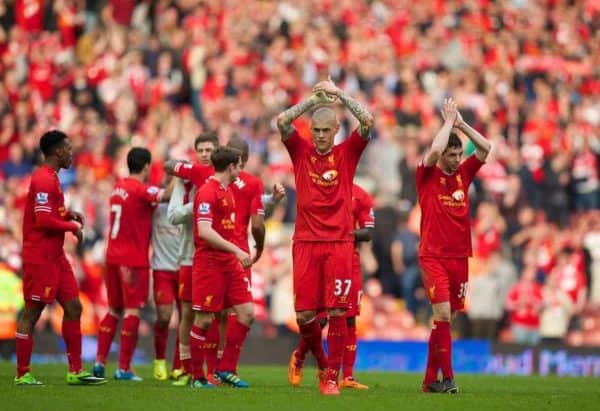





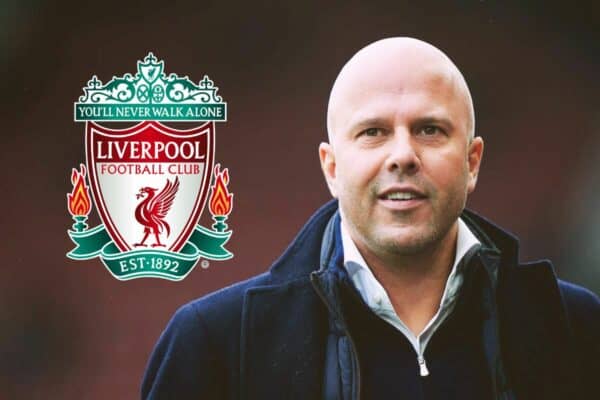

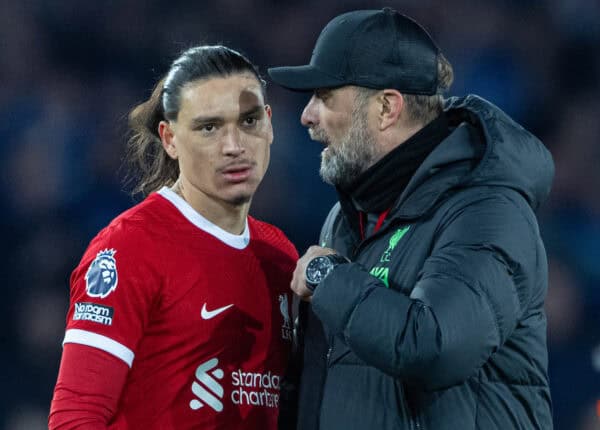


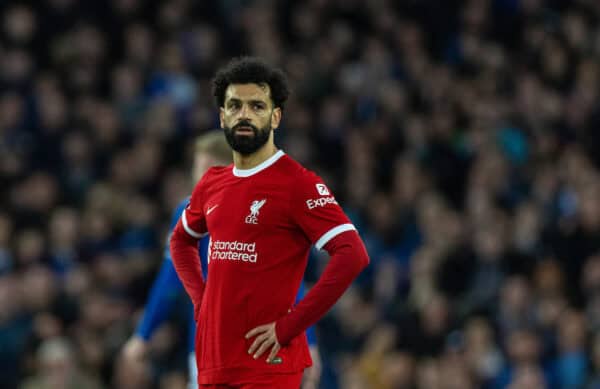
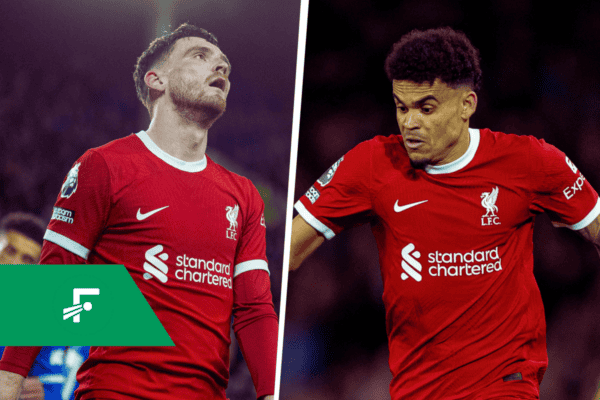



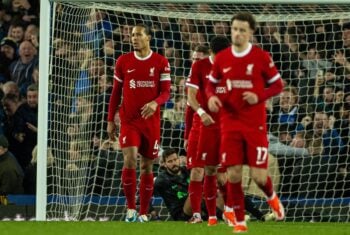
Fan Comments